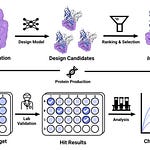GenomePAM is a high-throughput platform that maps and quantifies PAM compatibility across the entire human genome. Developed by researchers at City University of Hong Kong and Harvard Medical School, it uses a DNA barcoding and capture system to measure how Cas enzymes behave in real genomic contexts.
Unlike traditional CRISPR screens that rely on synthetic targets, GenomePAM evaluates PAM activity across native chromatin. It accounts for real biological factors such as DNA methylation, nucleosome positioning, and epigenetic silencing.
By profiling 55 Cas enzymes across more than 14 million PAM sites, the platform reveals unexpected editing patterns, context-specific inhibition, and hidden genomic regions that resist editing despite matching the target sequence.
Why it matters:
Explains why CRISPR editing success can vary across labs and cell types
Improves gRNA design by accounting for genome context, not just sequence
Helps researchers choose the right enzyme for a given site or cell type
Advances genome editing from rule-based design to context-aware prediction
GenomePAM gives researchers a new lens to understand how genome architecture shapes CRISPR performance. It brings us closer to precise, reliable genome engineering in real biological systems.
Try it out for yourselves: GitHub









